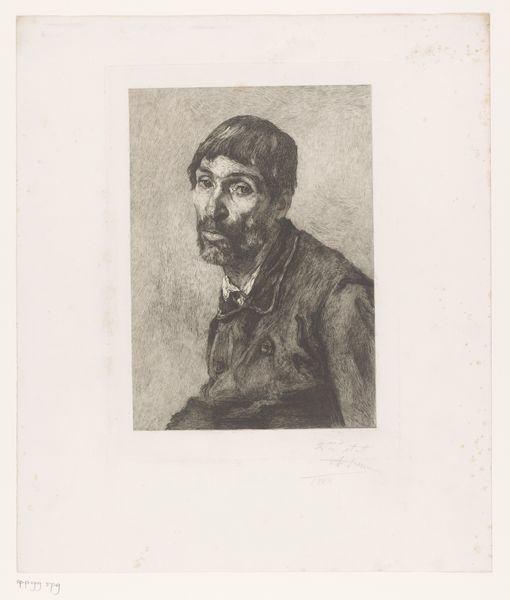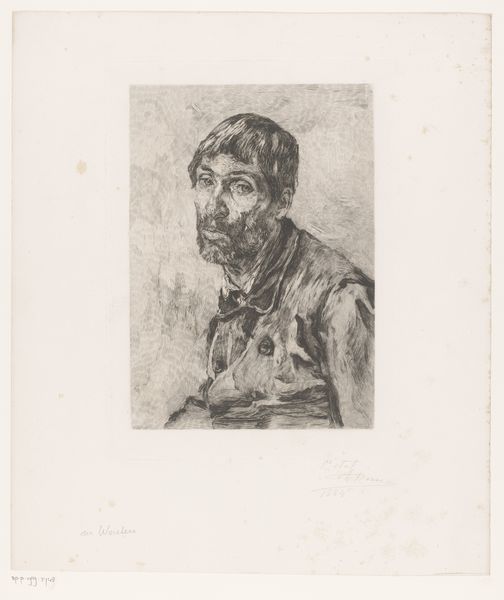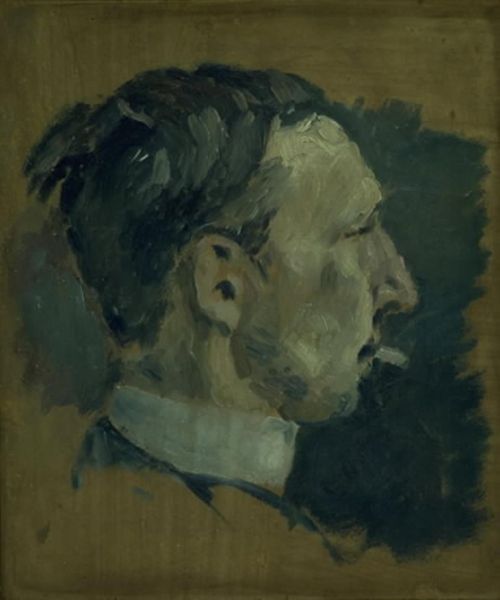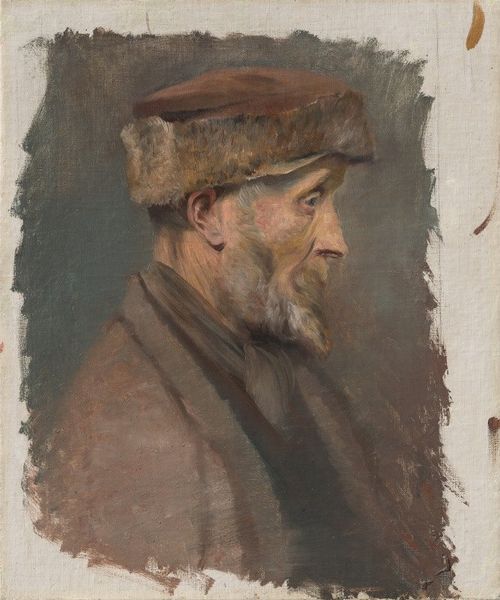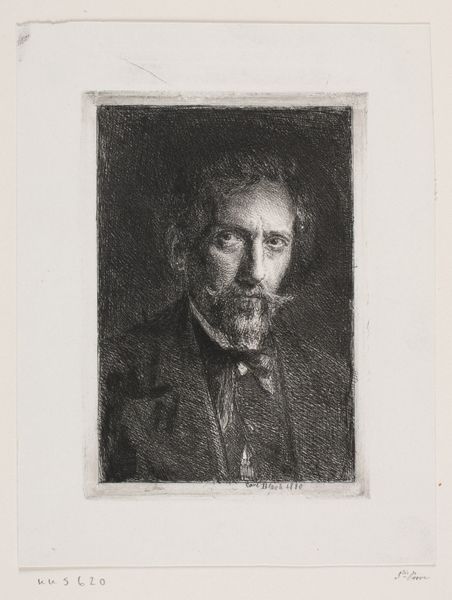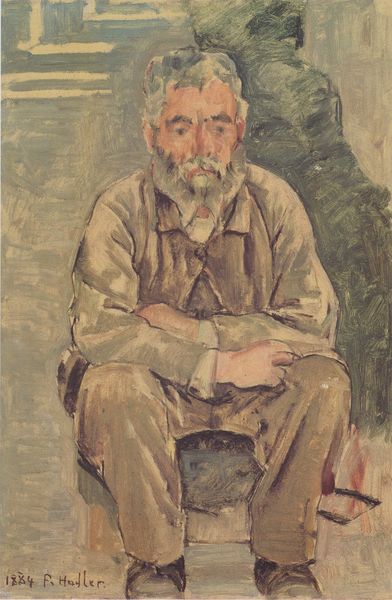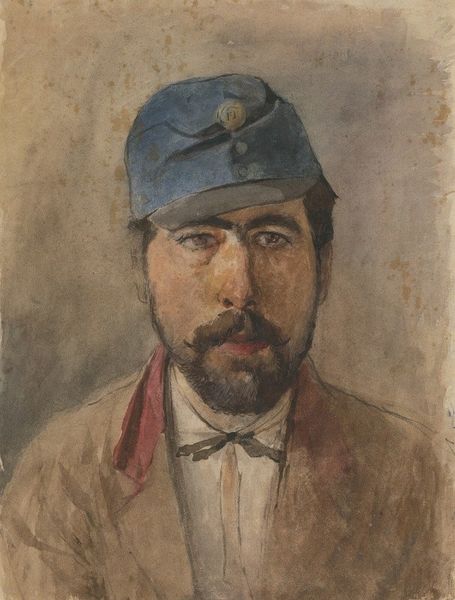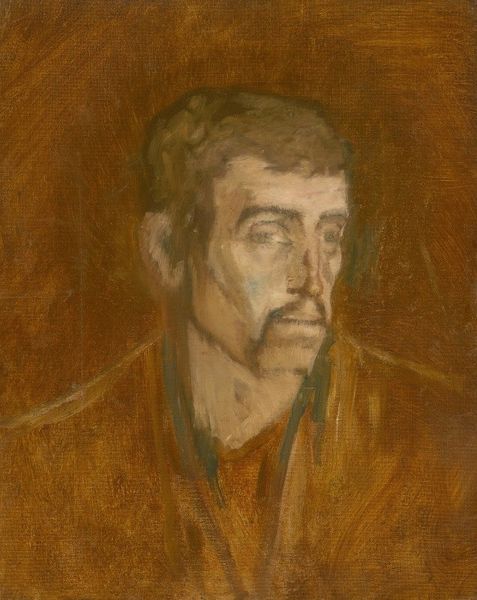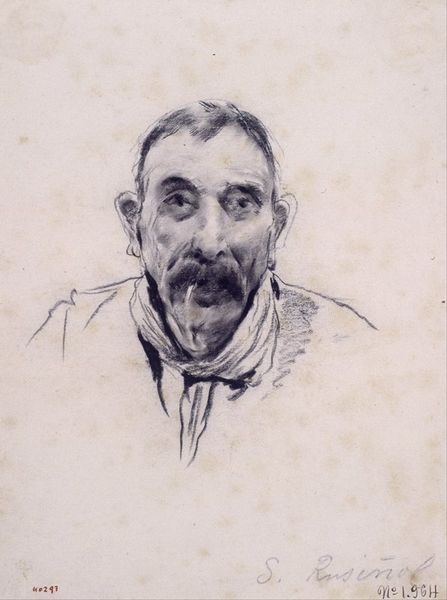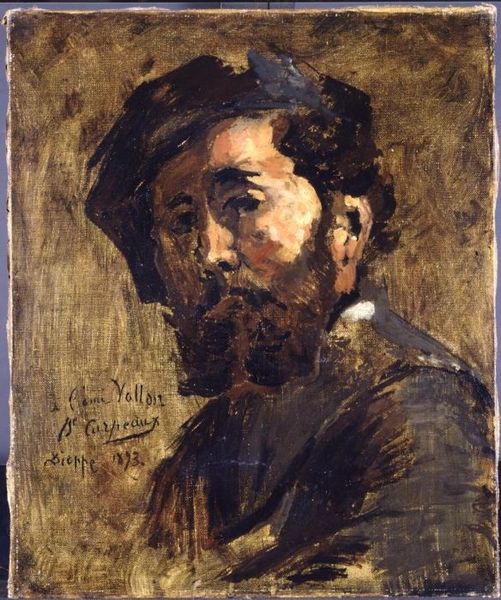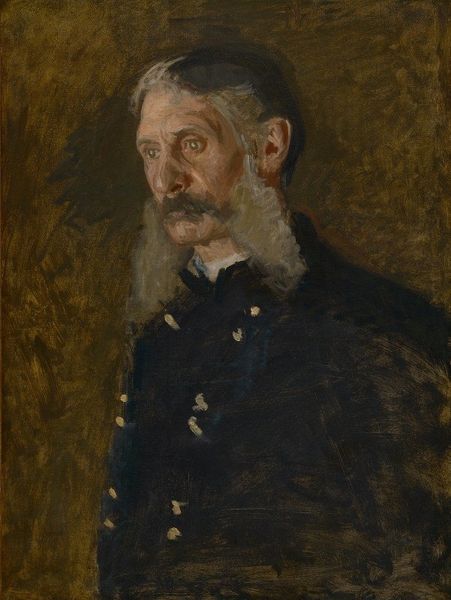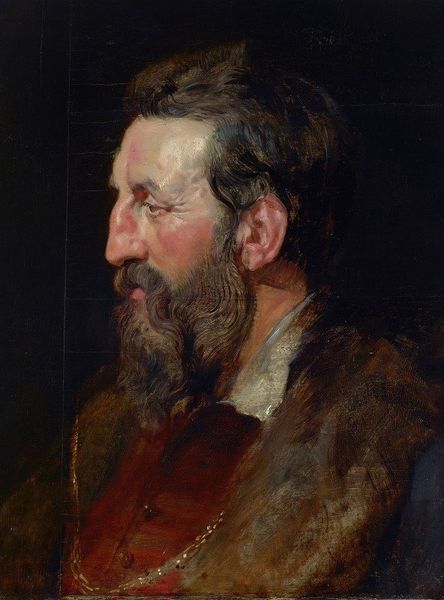
painting, watercolor
#
portrait
#
painting
#
watercolor
#
realism
Dimensions: height 177 mm, width 125 mm
Copyright: Rijks Museum: Open Domain
Editor: This is "Portret van een man," a watercolor painting by Emile Charles Wauters, created sometime between 1856 and 1933. It's strikingly realistic, almost photographic in its detail, and I am drawn to its simplicity. What do you see in this piece? Curator: Looking at it historically, the late 19th century saw an increasing interest in Realism. This wasn't just about depicting the world as it was, but also about depicting people from all social classes, a break from earlier traditions that focused on the elite. Notice how Wauters chooses a subject that doesn't appear idealized or royal, or posed formally in any conventional way. Editor: Right, the man’s expression seems very candid. Was there a specific audience for realistic portraits like this one? Curator: Absolutely. As the middle class expanded, so did the market for art depicting everyday life and everyday people. Portraits, once the domain of the aristocracy, became accessible to a broader segment of society. Artists like Wauters found patronage among these rising social groups who valued a kind of honesty and familiarity in their art. Who do you think would buy this? Editor: Probably somebody from his close entourage! He appears to be an ordinary man in everyday garments... so a more widespread middle class would be the primary consumers. Curator: Exactly. And this informs the meaning; the value resides in depicting relatable subjects rather than glorifying wealth or status. Art increasingly reflected and shaped social identities and aspirations. Did this insight shift your appreciation of the painting at all? Editor: Definitely, knowing the historical context makes me appreciate the painting even more. It’s not just a portrait; it’s a reflection of changing social dynamics.
Comments
No comments
Be the first to comment and join the conversation on the ultimate creative platform.
